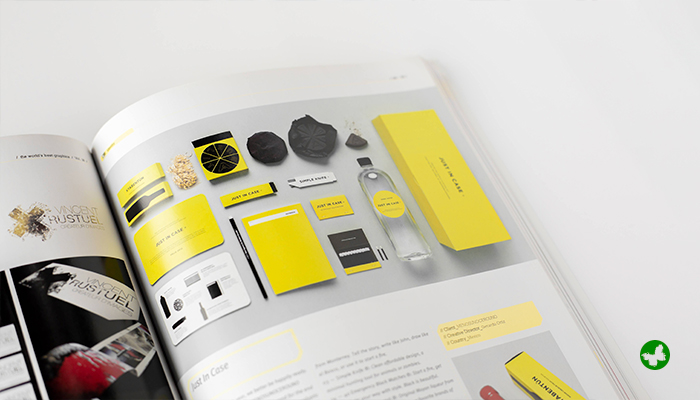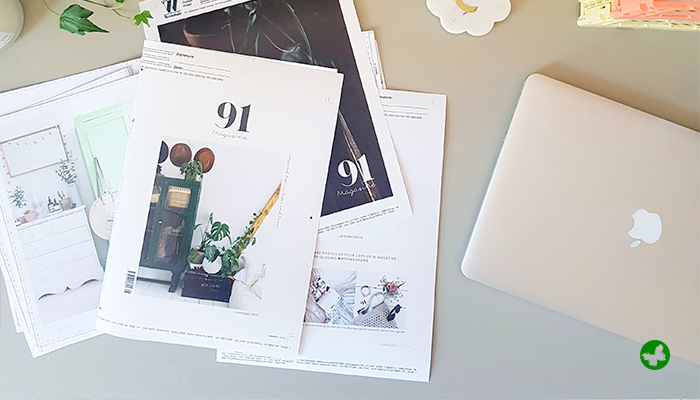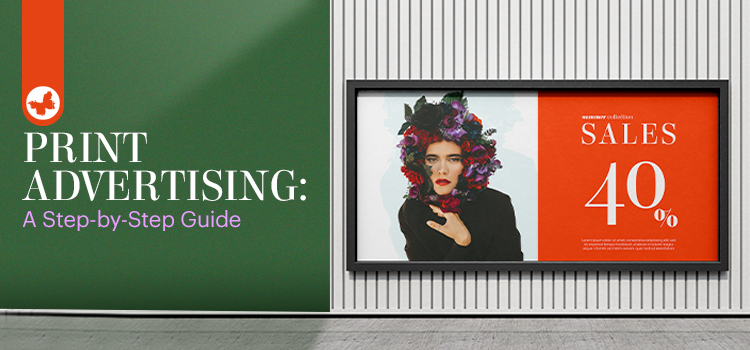In our modern, digitally-focused world, the prominence of online marketing may lead us to underestimate the influence of print advertising. However, despite the surge of digital marketing, print advertising still offers significant value. It provides businesses with an effective medium to reach and captivate their intended audience. Leveraging the tangibility and tactile appeal of print, companies can foster deeper connections with consumers, successfully driving brand engagement and loyalty. Therefore, print advertising remains a crucial component of a comprehensive marketing strategy.
Contents
What Is Print Advertising?
Print advertising encompasses a wide range of advertising methods that make use of physical printed media platforms. This includes traditional channels such as newspapers and magazines, where eye-catching advertisements are strategically placed to grab the attention of readers. Brochures and flyers are another avenue, allowing businesses to create visually appealing designs that can be distributed at trade shows, events, or through direct mail campaigns. Additionally, billboards offer a large-scale form of print advertising with high visibility in public spaces. The key objective of print advertising is to create visually compelling and persuasive content that captures the attention of potential customers and leaves a lasting impression that compels them to take action.
What Are the Types of Print Advertising?

In this comprehensive guide, we will explore print advertising techniques, the different types of print advertising available, and why it remains a valuable marketing strategy. So, let’s dive in!
Newspaper Advertising
Newspaper advertising remains a timeless and effective means to reach a widespread audience. With the option to choose from different ad formats, such as classified ads, display ads, or inserts, businesses have the flexibility to tailor their approach based on their budget and specific marketing objectives. Whether it’s a classified ad for a local event or a full-page display ad to promote a new product, newspaper advertising offers a versatile platform for businesses to engage with a diverse reader base and gain valuable exposure in the community.
Magazine Advertising
Magazine advertising provides businesses with targeted advertising opportunities through the ability to match their message with a specific demographic. By selecting niche publications, businesses can craft visually exciting and highly specialized ads that appeal to a specific group of readers. Furthermore, reputable magazines often carry a sense of novelty and exclusivity, which creates a sense of credibility and authority, enhancing the perceived value of businesses’ offerings and increasing the potential for customer engagement and ROI.
Brochure and Flyer Advertising
Brochure and flyer advertising offers cost-effective ways for businesses to distribute information about their products or services. These tools can be utilized to create visually appealing designs and messaging, that share a brand’s story, and generate interest among potential customers. Additionally, brochures and flyers offer versatility in distribution, as they can be handed out at events, placed in strategic locations, or mailed directly, making them a valuable resource in any comprehensive marketing campaign.
Direct Mail Advertising
Direct mail advertising is a targeted approach to reaching potential customers by sending promotional materials directly to their mailboxes. This personalized form of print advertising enables businesses to customize the messaging to resonate with specific audiences, increasing the likelihood of engagement and response. Whether it’s a captivating postcard, an informative catalogue, or a personalized letter, direct mail allows for a highly effective means of communication that can generate leads, drive sales, and build lasting customer relationships. It offers a tangible and attention-grabbing way to make a brand memorable and create a sense of anticipation and excitement among recipients.
Outdoor Advertising
Outdoor advertising encompasses various forms of print advertising that are displayed in public spaces, such as billboards, bus shelter ads, and posters. With their large size and strategic placement, these eye-catching displays are designed to capture the attention of passersby and leave a lasting impression. Whether it’s a vibrant billboard along a busy highway, a creative bus shelter ad at a popular transit stop, or an enticing poster adorning a city street, outdoor print advertising effectively grabs the attention and generates brand awareness in high-traffic areas. It creates opportunities for businesses to reach a diverse audience and make a memorable impact in the real world.
Is Print Advertising Still Effective?
The digital era has undoubtedly transformed the advertising landscape, but print advertising remains a viable and effective marketing strategy for several reasons:
Read More: Is Print Advertising Still Effective?
Tangible Presence
Print materials offer a tangible presence and physical connection with the audience that online ads can’t replicate. The very act of holding a magazine or flyer creates a sensory experience that engages the senses of sight and touch, making people more likely to remember the content. Having something to hold, leaf through or display offers a sense of ownership and a way for people to feel more connected to the brand. This also allows businesses to communicate their value proposition through physical expressions that capture the attention of the target market, making them more receptive to the marketing message. Ultimately, print materials provide a greater opportunity to foster brand loyalty in an increasingly digital landscape.
Less Clutter
Print mediums provide a less cluttered space for businesses to stand out and make a lasting impression, especially compared to digital channels that are inundated with ads. With online platforms filled with banner ads, pop-ups, and sponsored content, it can be easy for a brand’s message to get lost in the noise. In contrast, print materials offer a focused and intentional way to capture attention, as they are typically designed with purpose and strategic placement. This allows businesses to differentiate themselves and create a memorable impact by leveraging the power of simplicity and minimalism. By cutting through the clutter, print advertising allows brands to effectively communicate their unique value proposition and make a strong visual statement that resonates with their target audience.
Targeted Reach
Print advertising offers targeted reach, focusing messages on specific geographical areas or niche publications. This targeting ensures the message reaches the ideal audience interested in the promoted product or service. Strategically placing ads in local newspapers, magazines, or industry publications helps businesses reach their market and boost lead generation or sales. This targeted approach minimizes the wastage of advertising resources by reaching the right people in the right place, maximizing the overall effectiveness of the campaign. It allows businesses to make the most of their marketing budget and achieve a higher return on investment.
Credibility and Trust
Print media is trusted for its reliability compared to online platforms prone to fake news and security issues. Printed publications are curated for accuracy by trained professionals. Featuring a business in reputable publications can enhance the brand’s credibility and help build trust with consumers. This is especially true if the publication is established in the industry or community and has a loyal readership. When consumers see a business in a trusted publication, they’re more likely to view it as reputable and legitimate. Trust and credibility are powerful tools for businesses aiming to establish leadership and enhance their reputations.
How to Do Print Advertising?

With the right approach, businesses can use print media to reach their audience effectively and leave a lasting impression.
Define Your Target Audience
Defining your target audience is a crucial step in creating effective print advertising. Understand your ideal customers’ behaviours, pain points, and needs to craft compelling messaging that resonates. Understanding your audience’s demographics, interests, and preferences can help you choose the most relevant publications for your advertising campaign. For example, if your target audience is young adults, you may consider publishing an ad in a trendy magazine or supplement in a local newspaper. Detail-oriented messaging speaks effectively to your ideal client, increasing conversion likelihood.
Choose the Right Publications
Choosing the right publications is essential for successful print advertising. Take the time to thoroughly research and select publications that align with your target audience’s interests. Consider both local newspapers and magazines, as well as industry-specific publications that your ideal customers are likely to read. Place ads in high-reading publications to maximize reach and target your audience effectively. This targeted approach helps to increase the effectiveness of your print advertising campaign and generate better results for your business.
Craft a Compelling Message
Crafting a compelling message is crucial in print advertising. Firstly, your message should be clear, concise, and effectively communicate the unique value proposition of your product or service. Subsequently, focus on highlighting your key selling points in a way that captures the reader’s attention and generates interest. Additionally, incorporate persuasive language, captivating headlines, and compelling visuals to make your advertisement stand out. Ultimately, craft a compelling message to engage your audience, pique curiosity, and drive action, increasing conversion to loyal customers.
Design Eye-Catching Visuals
Designing eye-catching visuals is crucial for print advertising. Firstly, invest time and effort into selecting high-quality images or graphics that are visually appealing and align with your brand identity. Subsequently, ensure design elements like colours, fonts, and layout complement your message for a cohesive visual experience. Additionally, use striking visuals to highlight key information, such as selling points or your call-to-action. Ultimately, create visually captivating ads to enhance your print campaign’s impact and leave a lasting impression on your audience.
Emphasize a Strong Call-to-Action
Emphasizing a strong call-to-action (CTA) is essential in print advertising. A CTA prompts action, like visiting your site, calling, or visiting in person. Encourage engagement with a strong, prominent CTA in your advertisement. Use action-oriented language and create a sense of urgency to motivate readers to take the next step. A clear, compelling CTA increases conversions and ROI for your campaign.
Track and Measure Results
Tracking and measuring the results of your print advertisements is crucial for evaluating their effectiveness. To achieve this, implement a system that allows you to monitor the response and conversions generated from your print campaign. Consider using unique coupon codes, landing pages, or dedicated phone numbers assigned to each advertisement to track customer engagement. Subsequently, analyze this data to gain insights into top-performing ads, informing future campaign decisions. Ultimately, optimize your strategy and maximize ROI by adjusting based on results.
Monitor and Optimize
Continuously monitoring and optimizing your print advertising efforts is crucial for achieving the desired outcomes. Firstly, analyze response rates, conversions, and return on investment (ROI) to understand what’s driving success. Subsequently, use this data to refine your advertising strategy by targeting new demographics or adjusting your messaging as needed. Additionally, continually testing and optimizing your approach ensures that you’re maximizing the efficiency and effectiveness of your advertising campaign. By staying updated on your results, you can make data-driven decisions, continuously improving your print ad performance for better business outcomes.
Consider Integrated Campaigns
Consider integrating your print advertising with other marketing channels to maximize your reach and impact. To achieve this, explore coordinating your messaging, design, and branding across various platforms for a cohesive and memorable brand experience. In addition, aligning print ads with digital channels amplifies your message and engages your audience in multiple ways. Furthermore, integrated campaigns create a seamless brand experience that resonates with customers and reinforces key messages. Ultimately, this holistic approach helps establish a strong presence across traditional and digital channels, driving better business results.
Conclusion
In conclusion, print advertising continues to be a valuable tool in the marketer’s arsenal. Using various print advertising types and their unique benefits can create impactful marketing campaigns for businesses. So, embrace the power of print advertising and unlock new opportunities for your business today!
We hope you find this content from ButterflyGP useful. Please share your views with us.
